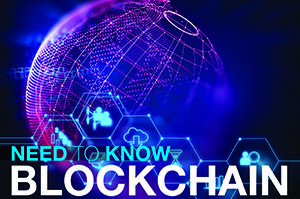The author is chairman of Digital Radio Mondiale.

LONDON — What a funny year 2017 promises to be, full of contradictions and surprises. At CES 2017 in Las Vegas the talk was about driverless, integrated cars, multi-standard chipsets for digital radio as well as hairbrushes and robots animated by artificial intelligence. So on one hand, robots will soon crawl in our front rooms teaching adults yoga and telling children stories.
On the other, old vinyl records, cassettes and cassette recorders (some with radio incorporated in them) have become popular again. The total production value of analog records produced by domestic companies belonging to the Recording Industry Association of Japan rose tenfold in 2015 compared to 2010. Panasonic and other companies have launched new record players one after another. Robots, cassette recorders or nice radio sets?
Already this year, FM has been written off by some and given a long life by others. Norway started to switch off its analog FM transmissions at 11.11 a.m. on Jan. 11. This date reminds one of the end of World War I, declared on the 11th day of the 11th month at 11 o’clock. Will this be just an experiment or announce the end of FM? AM was also declared old hat, a bit like the cassette recorders. But India is bucking the trend, proving that AM in DRM is the way to entirely cover large countries with reduced energy costs. The coverage of 50 percent of India by 37 medium-wave digital transmitters is a huge development and cars and receiver manufacturers are taking note.
With so many contradictory trends, it is then the time to take a reality check on myths and the actual facts.
Research shows that some prevalent myths, such as the one that says “millennials will never become homeowners or will never get married,” are blatantly untrue. Other myths like “they seldom watch TV or listen to radio as they favor YouTube and Netflix,” are only partly true. Another myth strongly promoted is that “yoof,” or millennials, will be soon totally devoted to IP and will get their music from Pandora and Spotify abandoning radio.
According to the U.S.-based 2016 Vision Critical survey, 55 percent of 22- to 36-year-olds reported subscribing to Pandora. Spotify and YouTube are another major source of music for millennials. But this has not extinguished their radio usage, even if — as with traditional TV — time spent with it is trending downward.
Last year in the US (according to Nielsen) 18– to 24–year-olds were roughly averaging 10 hours 24 minutes per week with AM/FM radio. The figure was even higher for 25– to 34–year-olds. IP is not a myth but the demise of radio is. Young people in the U.S., as in Europe and other parts of the world, are tuning in less than their elders, but they have not tuned out. Digital radio can and is bucking the trend, and this is reality.
But it is not doing so by copying and becoming another Pandora or Spotify, a music stream uninterrupted by speech (as two major U.K. classical stations did before Christmas). Then the reaction is instant as noted by Kate Chisholm in the U.K. Spectator magazine: “To lose the serendipity by which it’s possible to switch on and find yourself taken right inside a different world is a real and substantial loss, depriving listeners of the chance to discover something they’ve never thought of before, or understood, to come across something they would not normally choose to listen to. Such random encounters are often the most resonant.”
Jukeboxes are fun but radio has power and remains part of the political discourse. Remember the power of radio in World War II in bringing the U.S. together or the impulse given to radio recently by the Indian prime minister’s weekly radio “chats.” The reality is, that, in large parts of the world, radio remains essential. Increasingly radio is also viewed as possibly part of a different business model.
In a recently published article in India, Shashi Shektar argued, “digital India can be fully realized if we target future public spending on digital broadcasting infrastructure whereby we create an ecosystem of innovation and spur consumer electronics manufacturing in the country.” The new vision is to create a whole new ecosystem of products, platforms and devices with the potential to sell to the rest of the world.
This opportunity has been missed with mobile telephony but digital radio is fresh, up for grabs and, as the ultimate integrator, can be part of this vision. Open standards, like DRM, can be developed by local specialists to be part of these new ecosystems, new business models and revive local industries, which for too long have been obsolete. These digital standards stimulate content creation but also job creation. And where the markets are significant, the returns will be too.
If 2017 is a year of surprises and contradictions, it is also the time to abandon ideas and hierarchies established 10 or 20 years ago. It is the time to relinquish old myths and preconceived notions about digital radio and give it the place it deserves in the new world of 2017.












